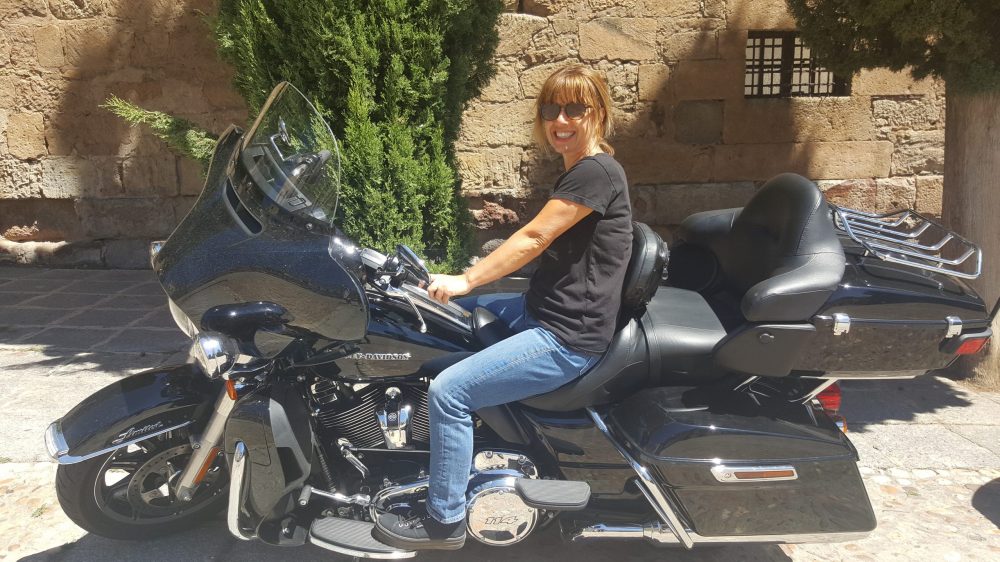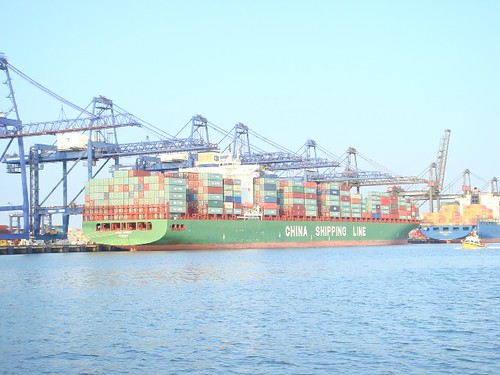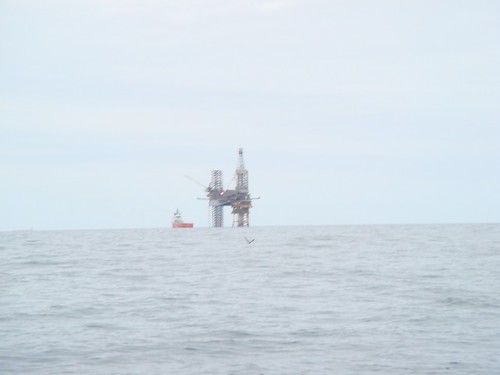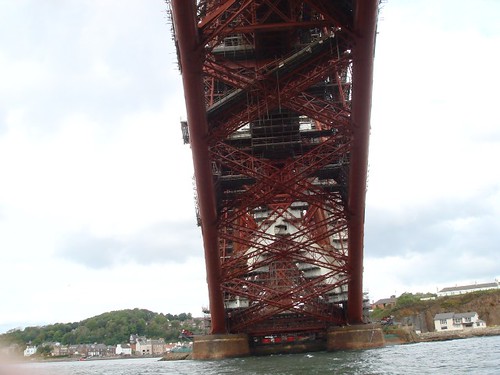Sara & I had initially travelled down to view Sun Dog and we both felt she could be ideal for our needs, we then travelled back home and I returned a few weeks later with Mike Hall a surveyor with Paul Jeffes & Co. We also had the added benefit of the current owner being on hand. He explained the way the electrics etc functioned, but unfortunately he had no idea how many litres per hour the boat used, anyhow the deal was completed via Opal Marine Brokerage, and I then had to arrange to get her back to Scotland.
I had initially considered having her transported on the back of a truck, but my good friend Marcus Tettmar (who lives in the south of England) said he would take some time out and help me sail her back, as he stated, “Gerry, boats are not meant to be on the back of trucks, they are meant to be in the sea”…….how could I argue with this logic – bonus!
With Sun Dog being on the east coast of England it seemed our best (quickest) option would be to sail her northwards up the coast and into the Forth Estuary, berthing her at Port Edgar marina ( just under the Forth Road Bridge) a distance of some 350+nm. From there we could (later in the year) take her through the Forth & Clyde Canal.
Maximum air draft of vessels going through the canal is 3 metres, maximum depth around 1.5 metres (?) therefore she should fit through the canal, if a bit tight on air draft, once the mast is down. If she doesn’t fit we will have to sail her up to Inverness and bring her down through the Caledonian Canal.
Marcus and I agreed a date and arrived about the same time on the Thursday. We split the list of chores with Marcus doing the food shop, and me doing the chandlery purchases and collecting the liferaft we had hired for this trip. Our pencil plan was to either get away that evening with the tide, or sleep over and leave the next morning.
We seemed to be making good time with the provisioning etc when by chance we found out that the marina didn’t have a 24 hour fuel facility, and if we wanted fuel, we would need to get the boat round rather quickly as the fuel berth was about to close!
With kit lying everywhere we went round to the fuel berth to fuel up, but in the rush we had trusted that the fuel pump would cut out when the tanks were full, but unfortunately we suffered a fuel blow back and ended up with diesel sprayed all over the boat!!
Hindsight is a wonderful thing, and with the value of this we now know that we should have opened the side lockers and simply looked at the clear filling hoses!! In the chaos we also forgot to fill the spare jerry cans; and by the time we remembered and ran round with the cans the fuel berth was closed until 0830 next morning..much muttering was heard on board along with a bit of frustration/exasperation. When things calmed down a bit we had the boat cleaned up and fully ready to go, we then checked the fuel sight glasses and it looked like one tank was only half full.
However the decision was made to leave Ipswich and refuel/top up at Shotley marina further down the river where the fuel berth was open until around 2100, this meant time spent going through a lock and meant a little bit more time would be lost.
In the event we filled the jerry cans and topped up the tank it must have been an air lock in the sight glasses as she only took 23 litres! What I would have given for the boat to have fuel gauges for both tanks!!
Anyhow we were now happy enough that the tanks were full, and our plan was to include stopping off around Newcastle area and refilling the tanks. This would allow us to calculate the fuel usage and also ensure we had enough for the rest of the trip to Port Edgar should we have to motor the whole way and stay within our weather window.
We finally left Shotley marina around 2000 and headed for the exit with still a few hours of tide in our favour. The weather forecast was indicating variable weather with winds from the NW, NE force 4/5 occasional 6. We were now committed to getting to our first stop somewhere around the Newcastle area, as most of the other ports of refuge were either ones that dried out, or could be tricky entering in an ebb tide in the wrong wind conditions.
Passing Felixstowe we saw this huge container ship – amazing number of containers on the deck – hopefully they all stay there !
The electronics on board consisted of a Geonav 6 Plus black and white chartplotter, with a Garmin GPS linked to a Raymarine 530 chartplotter. We also had all the appropriate paper charts, and had agreed to not only keeping a detailed log, but also to mark off the paper charts en route.
As we turned the corner and started heading north we were amazed, that with the engine running at 1500 revs, the effect of this with the big three bladed prop, had us charging along between 8 & 9 kts, this was almost surreal. All of this without the benefit of any kind of breeze as it was non existent at this time, ain’t it great when the tide give’s one a lift at the start of a trip!
All through the night the calm conditions prevailed until mid afternoon next day when we had about a F4 on the nose, but Sun Dog was quite happily motoring sailing along. When the tide was with us the speed was good, and when against we dropped below our intended average speed of 6 kts. Engine was kept at between 1500 & 1600 revs and we had the mainsail up to steady the motion.
Passing through the gas rigs some 20 miles + from the coast,
Marcus was at the helm and said that the Geonav was fading, and it eventually failed completely. Within seconds this was followed in turn by the other electronic systems. Not a major issue as far as navigation was concerned as we had the log and chart up to date, but we assumed that there must be a loose connection in the power supply to the instruments.
We checked all the connections and they seemed fine. Double checking with a multi meter showed that the power to the instruments was down at 10 volts. Up went the floorboards in the wheelhouse to allow us to check the domestic battery bank, and yes the whole domestic bank was down at 10 volts.
The previous owners understanding of the way the batteries operated had been wrong, and we can only guess that he must have done short day trips and subsequently connected to shore power, thus keeping the batteries charged. The reality was that since leaving Ipswich the domestic bank had been running everything including the fridge for a considerable period of time, in itself quite impressive!
We simply adjusted the switch that we now knew would link all the batteries together, and trusted the alternator would be able to bring the domestic bank back up to full charge.
This situation clearly showed the benefit of keeping a log and perhaps also keeping the position and course on the paper charts if we hadn’t done this ……..?
Passing Whitby lighthouse during the night there was a fair amount of commercial traffic, and tides were a bit stronger than we had imagined they would be, given the distance offshore. Watches were around 2 hrs during the night, with some discussion early the next morning about where to stop and refuel. The first option was North Shields where Marcus could have met up with a friend of his, but this would have meant a few miles down the river to the fuel berth and the same on the exit, using up some valuable time, bearing in mind we only had a finite weather window.
I left the decision to Marcus who finally decided that Sunderland would offer us the quickest turnaround time. A few miles out from Sunderland we called them to ensure they were open 24 hrs (the situation we experienced at Ipswich was still on our minds) and in we headed to the fuel berth.
This is where the trip took a bit of a bad turn. As we entered the marina there was the fuel berth which also doubled as the reception berth, and it had a fishing boat already there – no worries, we simply hovered around until he left the pontoon. Then as we went to go alongside another fishing boat nipped in at our back and as he was small and wouldn’t have needed much fuel we let him get fuel first.
When it came our turn, we obviously had to ensure we filled both the tanks and also checked the engine oil and water. Unfortunately the fuel hose wouldn’t reach across the decks to the second tank, and while we were considering turning her around on ropes we were being subjected to verbal abuse from a group of men on the pontoon. I’m not sure if these were sailors or anglers, but either way their behaviour was appalling. We will never be back there – ever – it was an absolutely atrocious way for any group of adults to behave.
When we left we were both still furious and trying to calm down it really was that bad! The good thing was that when we had done the calculations on fuel consumption it worked out at 5ltr per hour, a lot less than I had imagined. If we had known this in advance we would have been able to go the full distance without stopping and avoided these “brain dead” individuals, who are simply a waste of good fresh air!
The wind god’s must have known we needed a bit of cheering up and they gave us enough wind to be able to sail with both the main and Genoa doing their best, and we were sailing along at 5.5 kts in glorious sunshine – this was indeed good medicine.
The rest of the trip was spent back in harmony and we also had the pleasure of enjoying the sight of a whale only a few hundred metres from the boat, and also watching pairs of Puffin, really delightful little birds.
We crossed the “border” back into Scottish waters, when off St Abbs I saw what looked like a fishing boat with a peculiar rig coming from astern on the same track as us. As it was getting closer I realised that no fishing boat would be going at that speed, and would not be painted grey. As we weaved past the lobster pot markers, it did the same closing to a few hundred meters astern and then the VHF kicked into life.
Turns out it was HM Customs who asked a number of questions, and once satisfied thanked us for our time and off they went heading north. It is quite reassuring to know they are around and doing their best, whilst at the same time conducting themselves in a very professional and courteous manner.
I was hoping that we would have enough daylight left to be able to see the Gannet Colony on Bass Rock which sits at the southern entrance to the Forth Estuary, but by the time we got there it was dark. However we could make out that the island was covered in what looked like lighter rock across a fair area, could this be guano? We lifted the binoculars and it was astonishing to see the island was completely covered in Gannets, this would have been amazing to see in daylight as it is the largest Gannet Colony in the world with some 80,000 birds all on this one rock. http://www.beautiful-scotland.co.uk/bass.htm
The final three hours or so that was left before reaching our destination was down this busy stretch of water with navigation lights everywhere marking out the various channels. The light on the hills above the town of Burntisland proved to be a good marker and pretty much lead us to the safe water mark, from which we could pick out the first starboard marker from which we could then work our way accurately down the North Channel. By this time we were both getting a bit tired, however we had been really comfortable in the wheelhouse with the gas heater keeping us nice and warm.
There was a bit of swell running with the tide and we had the mainsail up and were charging along toward the Forth Rail Bridge. As Marcus had not been here before, he sailed us under both this bridge and the Road Bridge and then within a few hundred meters we were safely tucked into the berth in Port Edgar Marina.
Previous daylight photo taken from underneath the Rail bridge.
We had some 5 hours sleep before Marcus was due to fly back home, having booked a flight whilst entering the Forth Estuary isn’t technology wonderful when it works?
In the morning we calculated that we had covered some 360nm in 54 hours, most of this motorsailing with excellent fuel consumption figures.
We also jokingly said there was no need for lifejackets sailing through the night on Sun Dog, but that instead we should have been wearing Dinner Jackets given that we were sheltered so much in the wheelhouse.
This had been a totally different kind of sailing experience for both of us, but for me it proved that the Rogger is eminently suitable for the type of family boating I have in mind.
She sailed well when the wind was up, was really comfortable in a sea (albeit only experienced so far in a F4) and it was warm and comfortable in the wheelhouse; it was a strange experience sailing through the night not wearing full waterproofs and woolly hats.
Great experience in great company, and with the exception of Sunderland, a superb trip – thanks Marcus.
Since we arrived at Port Edgar the weather has turned horrible with strong winds and gales forecast. I guess our guardian angels decided to take good care of us on this trip and made sure the weather window stayed open until we reached our destination.
I am a delighted with Sun Dog and look forward to getting her through the Forth & Clyde Canal to the West Coast where time can be spent (hopefully) in sunshine. But there again if it rains there’s always the conservatory sorry wheelhouse.
However, first of all I am flying down next week to meet with Marcus and give him a hand to get his yacht Csardas a Hanse 371, over to Ireland for his family’s holiday…………life can be hard at times!
Blog will be updated in due course.




